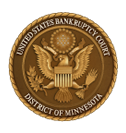Chapter 7 is a liquidation proceeding for individuals, corporations and partnerships. In a chapter 7 case, a trustee takes possession of all the debtor's non-exempt property, liquidates it for cash and uses the proceeds to pay creditors according to the priorities set forth in the Bankruptcy Code. For additional information, see Bankruptcy Basics, chapter 7.
Chapter 11 allows an individual, spouses or a business to reorganize, restructure their finances and continue to operate a business, if applicable. In a chapter 11 case, the so-called debtor-in-possession proposes a plan to creditors which, if accepted by the creditors and approved by the Bankruptcy Court, will allow the debtor-in-possession to reorganize. A debtor-in-possession may also propose a plan of liquidation and cease doing business. For additional information, see Bankruptcy Basics, chapter 11.
Chapter 13 enables individuals with regular incomes, under court supervision and protection, to repay their debts over an extended period of time according to an approved plan. The plan may provide for full or partial repayment. For additional information, see Bankruptcy Basics, chapter 13.
Chapter 12 allows family farmers with financial difficulties to repay debts over a period of time from future earnings. It is similar in many ways to a chapter 13 case. The eligibility requirements are restrictive, limiting its use to those whose income arises primarily from a family-owned farm. For additional information, see Bankruptcy Basics, chapter 12
Chapter 9 is designed to allow a municipality to continue operating while it negotiates a repayment plan for its creditors. For additional information, see Bankruptcy Basics, chapter 9.
Answer:
